Вы здесь
Cult-memorial complex Zhaisan.
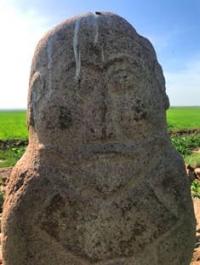
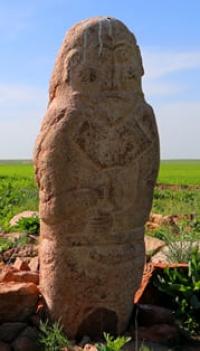
Wednesday Travel Kazakhstan.
"I made my way deep into unknown countries,
Eighty days went my caravan:
Chains of formidable mountains, forest, sometimes
Strange in the distance someone’s cities,
And more than once of them in the silence of the night
An incomprehensible howl flew into the camp."
Nikolai Gumilev. "By the fireplace."
Archaeological tours in Zhambyl region.
The cultural heritage of Zhaisan, located in a lowland, hilly, steppe zone, is bounded in the east by the western and northwestern slopes of the Chu-Ili, in the south by the Shu river valley, in the southeast by the Tarlygan mountains, in the west by the Shu river valley and by the Moiynkum sands in the north by the valley Espe and Shokpar rivers. It is located on the territory of the Shu district of the Zhambyl region.
The cult-memorial complex of Zhaisan is represented by a numerous series of ritual and burial structures, ancestral tamgas, rock paintings. Comprehensive archaeological research under the project for the study and preservation of Turkic monuments is focused on the cult-memorial complexes of the Zhaisan sanctuary.
As a result of archaeological exploration and a comprehensive study of the territory of the Zhaisan sanctuary, 16 cult-memorial complexes, places of accumulation of rock paintings, Turkic tribal tamgas carved on the rocks, together with petroglyphs, as well as on a stele and sculpture, were discovered.
In the topographic location of memorial monuments on the ground, a general pattern is observed. All monuments are subordinate to the terrain and occupy areas on wide terraces of sais, oriented from the southeast to the northwest.
Ritual structures with sculptures and steles are part of the funeral and memorial complexes and are located on the eastern and western sides. Archaeological excavations studied 13 ritual fences at the sites of Zhaisan 1, 2, 4, 6, 10 - 15, surveyed, photographed and copied rock paintings and Turkic tamgas in the areas of Kaskyrsai, Zhidelisai and Mombaisazy.
In order to determine the design features of the ritual structures of the Zhaisan sanctuary, various types of fences and burial mounds were studied. The systematization of the material from the studied Turkic cult monuments of the Zhaisan sanctuary allows us to distinguish 3 types of ritual structures.
The basis of each type is the type of construction - a fence, sub-rectangular or sub-quadrangular in plan, built of stone slabs placed vertically on the edge, or elongated bar-shaped blocks laid on one of the side faces.
The area inside the walls of the fence, as a rule, is filled with chipped stone, sometimes the space behind the fences along the perimeter, outside, is lined with stone. The fences do not have common walls, the gaps between them are filled with small stones.
Directly connected with the described type of ritual structure is a memorial, vertically installed pillar - a stele and a stone statue, usually installed on the eastern side of the structure or in the center of the fence. On some monuments, the stele is combined with the statue.
The position of each of them on the structure is different. All described monuments of the ancient Turkic sculpture of the Zhaisan sanctuary are made of granite. The sanctuary includes single (type 1), double (type 2), triple (type 3) fences.
Each of the types of ritual constructions is subdivided into subtypes according to the way the steles and statues are placed on the fences. Single fences with one stele installed from the east were studied at the sites Zhaisan 4, fence 2, Zhaisan 6, fence 1, and Zhaisan 13, fence 1 (subtype 1a).
A variation of the described type is subtype 16 - a single fence 2 of the Zhaisan 6 complex. Double steles are installed on this monument, one of which, reaching a height of about or more than 2 m, is installed in the center of the fence, and the second, smaller in size , stands outside, in the center of the eastern wall of the fence.
On the lateral, northern face of the stele, closer to the center, is carved tamga in the form of a circle, with a diameter of about 15 cm. Subtype 1c, described type 1, is represented by fence 1, complex Zhaisan 13, on which the stele is installed in the center of the fence, the female statue is located outside, near the eastern walls of the fence.
Another variety of single fences is reflected in subtype 1d, on the monument - the fence of the Zhaisan 16 complex, in the center of which a high stele is installed, and a male statue is located outside at the eastern wall of the ritual structure.
Double fences, combined into the second type of ritual constructions, are represented by two subtypes, which were studied at the sites of Zhaisan 2, fence 1 and Zhaisan 13, fence 2. Subtype 2a is characterized by two adjacent fences, a female statue was installed on the eastern side of the southern fence. nie.
To the east of the statue there is a path made of stones, ending with a circular layout (Zhaysan 2, fence 1). In subtype 26, in adjacent fences 2 of the Zhaisan 13 memorial, there was a high stele in the center of the southern structure, and a chest statue in the center of the northern fence.
The third type of ritual structure is represented by the structures of the Zhaisan 1, 10, 14, 15 complexes, consisting of three adjacent fences. All three adjacent fences of the memorial complex Zhaisan 1 (subtype 3a) are divided by vertical slabs, in the center from east to west, into sections. In the center of the sections there are low stone pillars (about 1 meter high).
In the two southern sections, there are two columns each, in all other sections, one each, on the eastern side of the central fence, outside there was a stone chest statue. In the southern section of the central fence, under a post, an iron plate arrowhead with an open bushing and a fragment of a shell plate were found.
In general, the analysis of the ritual structures of the Zhaysan sanctuary helps to identify a number of features that allow us to identify them as cult monuments of the ancient Turks, the basis of which is a memorial structure - a fence with a statue or a stele.
The typological variety noted by the constructions of the monuments of the Zhaisan sanctuary is characteristic of the entire range of the ancient Turkic culture. At the same time, a number of elements that serve as criteria for the ancient Turkic memorial complexes are missing on the religious buildings of the sanctuary under study.
Ritual constructions of the Zhaisan sanctuary fence are not accompanied by rows of balbals. In addition, the memorials of the sanctuary appear with other features that are not inherent in the ancient Turkic complexes. In contrast to similar monuments of Altai, Tuva and Mongolia, along with male statues, female statues are installed on the fences of the Zhaisan sanctuary.
Female statu
The style of depiction of mountain goats differs in the manner of rendering a voluminous torso, spiral-shaped horns. The mountain goats of Zhaisan are depicted realistically; they march along with their cubs and, as a rule, are objects of ritual hunting.
Türkic tribal tam-gi in the form of a circle are depicted twice: on the stele from the fence 2, the Zhaisan 6 monument and on the male statue of the Zhaisan 14 complex. Tamgas in the form of diamond-shaped pendants were carved on the rocks in three cases.
Similar pendants as amulets are depicted on ancient Turkic, Kazakh statues. Tamgas in the form of a circle ending with a vertical strip and a horizontal line extending from it or two lines directed in opposite directions are also marked on the rocks of the Zhaisan sanctuary.
Work on the study of Turkic ancestral tamgas and rock art monuments is carried out in parallel with a comparative analysis of materials from memorial complexes with sculptures and steles. Comprehensive research also includes scientific research in the field of ethnography of the indigenous population living in the area where Turkic sanctuaries are located.
The nomads of the auls of the Chui region, the descendants of the Botbai clan, until ethnographic modernity, beat out tamgas on the rocks of the Zhaisan valley. The forms of the Turkic tamgas are similar to the generic tamgas of Botbay.
The genealogy of the Botbai clan connects its genealogy with the Dulat tribe. And the connection of the eponym Dulat with the medieval Turkic tribal association Dulu seems to be reliable. Ethnographic data on the settlement of the Akkoyla and Karakoyla clans on the lands of the described region echo the data of sources on two Oguz clans with the same names, who headed the XIth century.
Seljuk empire.
The ritual construction of the Zhaisan 15 site, consisting of three large fences and a small one adjoining the central fence from the northern side, characterizes the cult construction of the 3c subtype. A distinctive feature of the monument is paired bust, male and female statues, installed on the eastern side of the southern and northern fences, and high large steles located in the center of all three large fences.
The next variety The ritual structure of type 3 is subtype 3g, a characteristic feature of which is expressed in the design of the cult monument Zhaisan 10. At this monument, steles are installed in the center of three adjacent fences.
Archaeological surveys for the study and preservation of monuments, begun in 2001, made it possible to identify more than 30 religious and memorial complexes, several places of accumulation of petroglyphs and outline the boundaries of the sacred zone.
The total area of the protected area with monuments occupies more than 77,000 hectares. A set of features that characterize the types of ritual and burial structures. Features of the iconography of stone sculptures, objects and decorations, vessels depicted on the sculptures made it possible to establish the cultural and chronological affiliation of the monuments.
It was revealed that the monuments concentrated in the sacral zone of the Zhaisan sanctuary were a protected area of the eastern Turkic tribes who moved to the lands in the valley of the Shu River in the middle of the VIII century.
Burial places, together with ritual structures with stone sculptures, served as objects of worship for the spirits of deified ancestors and ritual sacrifices to them and the supreme deities of the Turkic pantheon. Places of concentration of rock paintings served for ceremonies and rituals associated with the calendar cycle and socially significant events.
Throughout the entire period of research, all the Turkic monuments studied during the excavations were reconstructed, restored, stone sculptures were restored. Religious and memorial monuments occupy their former place in the natural environment, in the landscape of the Zhaisan valley.
At the same time, comprehensive environmental studies are being carried out aimed at preserving the landscape of the protected area with sacred objects of the Turkic tribes.
Geographical coordinates of cult-memorial complex of Zhaisan: N43°39'50.07" E74°11'45.26"
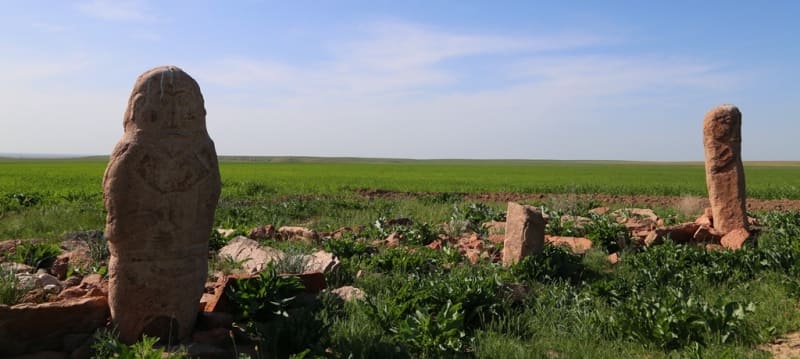
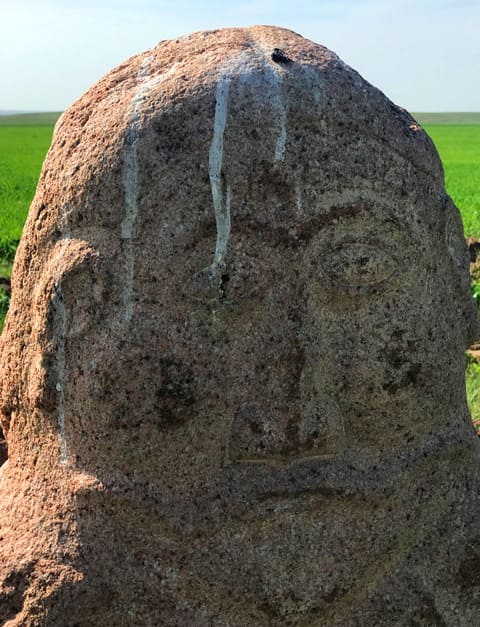
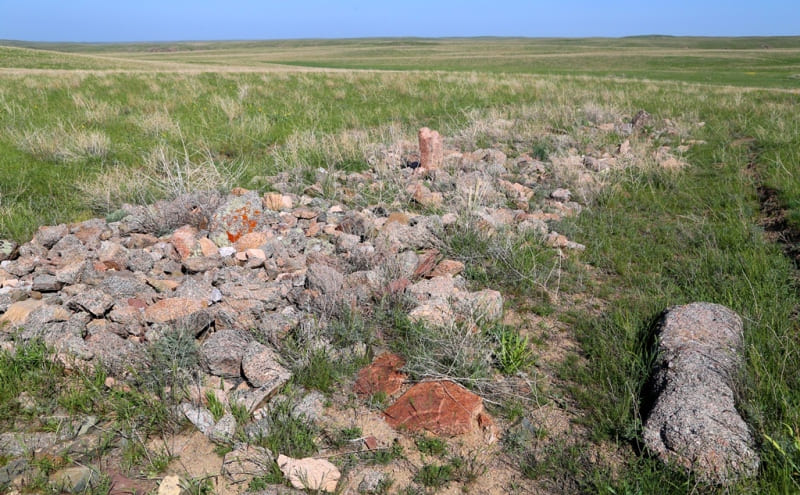
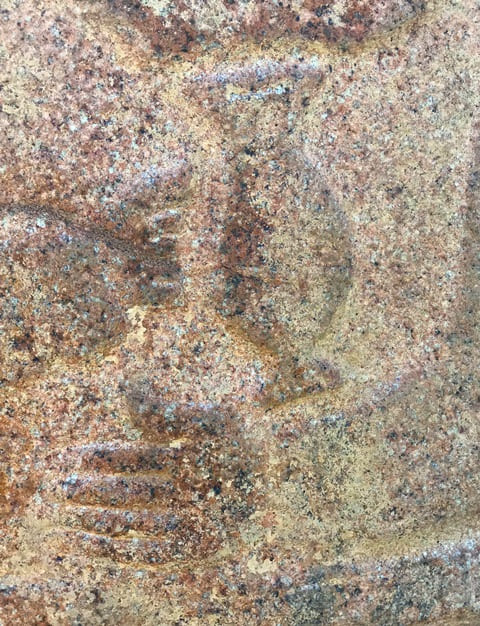
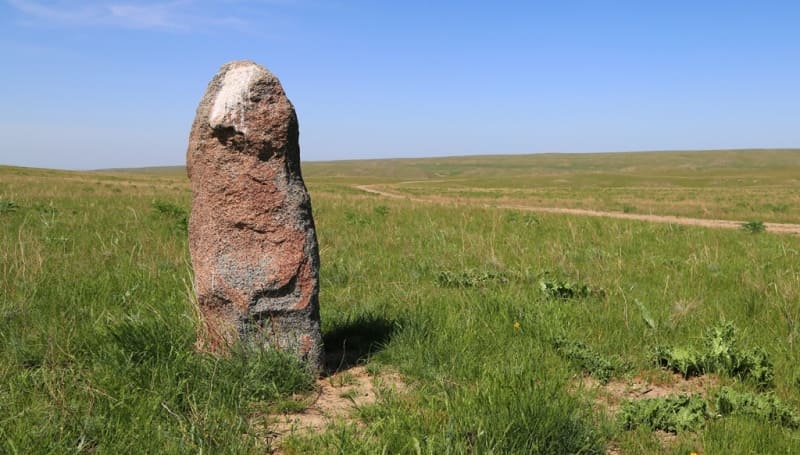
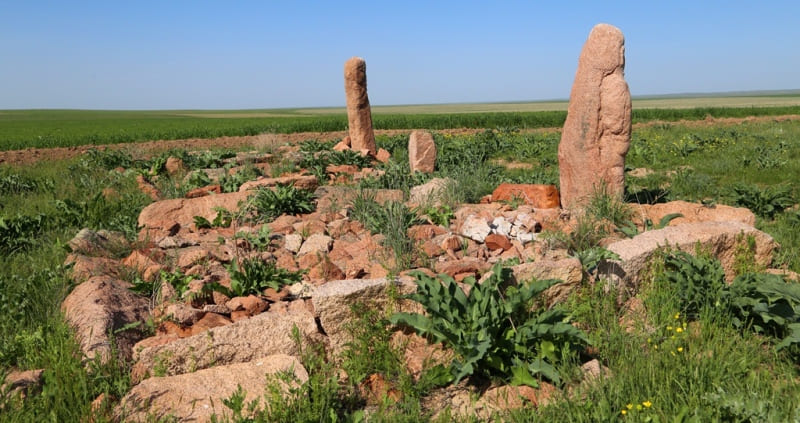
Authority:
Report on archaeological research under the state program "Cultural Heritage - 2004". Almaty: ID Credo, 2005. P. 31.
Dosymbaeva Aiman Medeubaevna.
Nuskabay Abdinur Argynbayuly
sbergenova B.
ttps://old.archaeology.kz/article?id=17587&alias=izuchenie-i-sohranenie-tyurkskogo-naslediya-svyatilisha-zhaisan
Photos by
Alexander Petrov.







